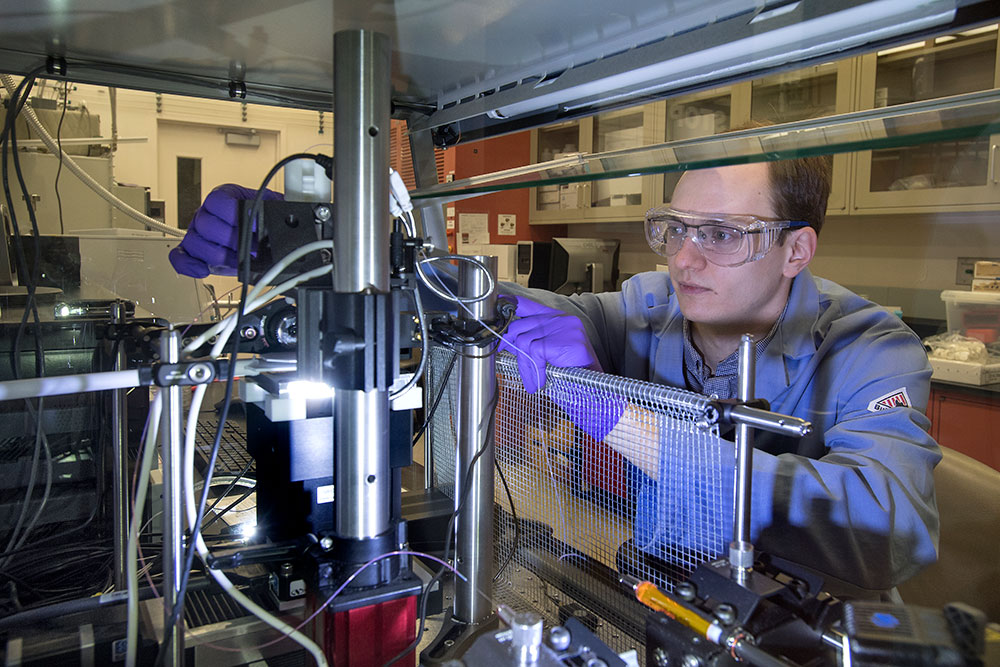
The design of new materials is all about achieving the right mix of properties from their constituent parts, whether they’re atoms and molecules, or more complex structures, such as nanoparticles or polymers. But because the desired properties often stem from nanoscale features and patterns, the components can’t just be thrown into a kitchen blender.

Now, the team has combined this electrospray deposition tool with the structural characterization technique of x-ray scattering. Together, these capabilities form a platform to probe how material structure changes across an entire composition space. The scientists demonstrated this platform for a thin-film blend of three polymers—chains made of molecular building blocks linked together by chemical bonds—designed to self-assemble into nanometer-scale patterns. Their platform and demonstration are described in a paper published today in RSC Advances, a journal of the Royal Society of Chemistry .
…
Though the team focused on a self-assembling polymer system for their demonstration, the platform can be used to explore blends of a variety of materials such as polymers, nanoparticles, and small molecules. Users can also study the effects of different substrate materials, film thicknesses, x-ray beam focal spot sizes, and other processing and characterization conditions.
“This capability to survey a broad range of compositional and processing parameters will inform the creation of complex nanostructured systems with enhanced or entirely new properties and functionalities,” said co-author Chinedum Osuji, the Eduardo D. Glandt Presidential Professor of Chemical and Biomolecular Engineering at the University of Pennsylvania.
Read more at the BNL Newsroom.
